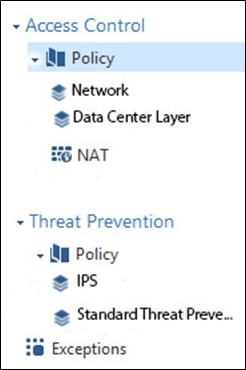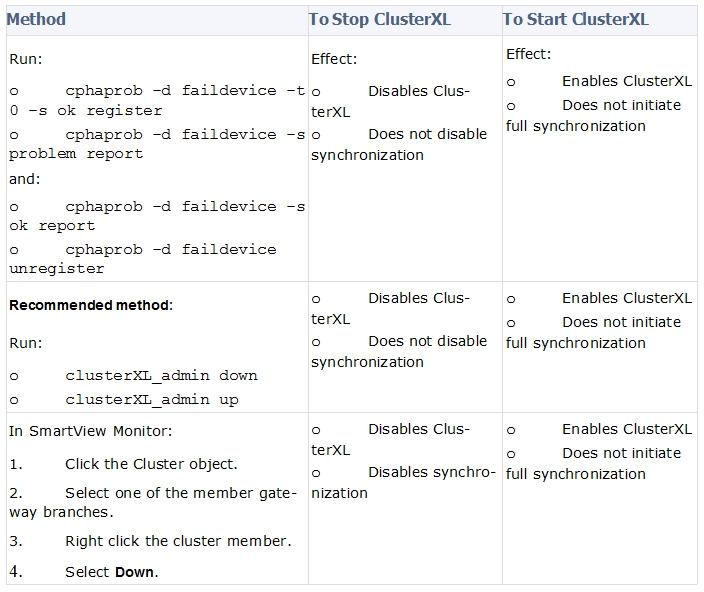Download Check Point Certified Security Administrator.156-215.80.Train4Sure.2019-12-13.295q.vcex
| Vendor: | Checkpoint |
| Exam Code: | 156-215.80 |
| Exam Name: | Check Point Certified Security Administrator |
| Date: | Dec 13, 2019 |
| File Size: | 7 MB |
How to open VCEX files?
Files with VCEX extension can be opened by ProfExam Simulator.
Discount: 20%
Demo Questions
Question 1
Which of the following is NOT an integral part of VPN communication within a network?
- VPN key
- VPN community
- VPN trust entities
- VPN domain
Correct answer: A
Explanation:
VPN key (to not be confused with pre-shared key that is used for authentication). VPN trust entities, such as a Check Point Internal Certificate Authority (ICA). The ICA is part of the Check Point suite used for creating SIC trusted connection between Security Gateways, authenticating administrators and third party servers. The ICA provides certificates for internal Security Gateways and remote access clients which negotiate the VPN link. VPN Domain - A group of copmuters and networks connected to a VPN tunnel by one VPN gateway that handles encryption and protects the VPN Domain members. VPN Community - A named collection of VPN domains, each protected by a VPN gateway. Reference:http://sc1.checkpoint.com/documents/R77/CP_R77_VPN_AdminGuide/13868.htm - VPN key (to not be confused with pre-shared key that is used for authentication).
- VPN trust entities, such as a Check Point Internal Certificate Authority (ICA). The ICA is part of the Check Point suite used for creating SIC trusted connection between Security Gateways, authenticating administrators and third party servers. The ICA provides certificates for internal Security Gateways and remote access clients which negotiate the VPN link.
- VPN Domain - A group of copmuters and networks connected to a VPN tunnel by one VPN gateway that handles encryption and protects the VPN Domain members.
- VPN Community - A named collection of VPN domains, each protected by a VPN gateway.
Reference:
http://sc1.checkpoint.com/documents/R77/CP_R77_VPN_AdminGuide/13868.htm
Question 2
Vanessa is firewall administrator in her company; her company is using Check Point firewalls on central and remote locations, which are managed centrally by R80 Security Management Server. One central location has an installed R77.30 Gateway on Open server. Remote location is using Check Point UTM-1 570 series appliance with R71. Which encryption is used in Secure Internal Communication (SIC) between central management and firewall on each location?
- On central firewall AES128 encryption is used for SIC, on Remote firewall 3DES encryption is used for SIC.
- On both firewalls, the same encryption is used for SIC. This is AES-GCM-256.
- The Firewall Administrator can choose which encryption suite will be used by SIC.
- On central firewall AES256 encryption is used for SIC, on Remote firewall AES128 encryption is used for SIC.
Correct answer: A
Explanation:
Gateways above R71 use AES128 for SIC. If one of the gateways is R71 or below, the gateways use 3DES. Reference:http://dl3.checkpoint.com/paid/74/74d596decb6071a4ee642fbdaae7238f/CP_R80_SecurityManagement_AdminGuide.pdf?HashKey=1479584563_6f823c8ea1514609148aa4fec5425db2&xtn=.pdf Gateways above R71 use AES128 for SIC. If one of the gateways is R71 or below, the gateways use 3DES.
Reference:
http://dl3.checkpoint.com/paid/74/74d596decb6071a4ee642fbdaae7238f/CP_R80_SecurityManagement_AdminGuide.pdf?HashKey=1479584563_6f823c8ea1514609148aa4fec5425db2&xtn=.pdf
Question 3
Review the following screenshot and select the BEST answer.

- Data Center Layer is an inline layer in the Access Control Policy.
- By default all layers are shared with all policies.
- If a connection is dropped in Network Layer, it will not be matched against the rules in Data Center Layer.
- If a connection is accepted in Network-layer, it will not be matched against the rules in Data Center Layer.
Correct answer: C
Question 4
Which of the following is NOT a SecureXL traffic flow?
- Medium Path
- Accelerated Path
- Fast Path
- Slow Path
Correct answer: C
Explanation:
SecureXL is an acceleration solution that maximizes performance of the Firewall and does not compromise security. When SecureXL is enabled on a Security Gateway, some CPU intensive operations are processed by virtualized software instead of the Firewall kernel. The Firewall can inspect and process connections more efficiently and accelerate throughput and connection rates. These are the SecureXL traffic flows:Slow path - Packets and connections that are inspected by the Firewall and are not processed by SecureXL. Accelerated path - Packets and connections that are offloaded to SecureXL and are not processed by the Firewall. Medium path - Packets that require deeper inspection cannot use the accelerated path. It is not necessary for the Firewall to inspect these packets, they can be offloaded and do not use the slow path. For example, packets that are inspected by IPS cannot use the accelerated path and can be offloaded to the IPS PSL (Passive Streaming Library). SecureXL processes these packets more quickly than packets on the slow path. Reference: https://sc1.checkpoint.com/documents/R76/CP_R76_Firewall_WebAdmin/92711.htm SecureXL is an acceleration solution that maximizes performance of the Firewall and does not compromise security. When SecureXL is enabled on a Security Gateway, some CPU intensive operations are processed by virtualized software instead of the Firewall kernel. The Firewall can inspect and process connections more efficiently and accelerate throughput and connection rates. These are the SecureXL traffic flows:
Slow path - Packets and connections that are inspected by the Firewall and are not processed by SecureXL.
Accelerated path - Packets and connections that are offloaded to SecureXL and are not processed by the Firewall.
Medium path - Packets that require deeper inspection cannot use the accelerated path. It is not necessary for the Firewall to inspect these packets, they can be offloaded and do not use the slow path. For example, packets that are inspected by IPS cannot use the accelerated path and can be offloaded to the IPS PSL (Passive Streaming Library). SecureXL processes these packets more quickly than packets on the slow path.
Reference: https://sc1.checkpoint.com/documents/R76/CP_R76_Firewall_WebAdmin/92711.htm
Question 5
Which of the following Automatically Generated Rules NAT rules have the lowest implementation priority?
- Machine Hide NAT
- Address Range Hide NAT
- Network Hide NAT
- Machine Static NAT
Correct answer: BC
Explanation:
SmartDashboard organizes the automatic NAT rules in this order:Static NAT rules for Firewall, or node (computer or server) objects Hide NAT rules for Firewall, or node objects Static NAT rules for network or address range objects Hide NAT rules for network or address range objects Reference: https://sc1.checkpoint.com/documents/R77/CP_R77_Firewall_WebAdmin/6724.htm SmartDashboard organizes the automatic NAT rules in this order:
- Static NAT rules for Firewall, or node (computer or server) objects
- Hide NAT rules for Firewall, or node objects
- Static NAT rules for network or address range objects
- Hide NAT rules for network or address range objects
Reference:
https://sc1.checkpoint.com/documents/R77/CP_R77_Firewall_WebAdmin/6724.htm
Question 6
Fill in the blank: The __________ is used to obtain identification and security information about network users.
- User Directory
- User server
- UserCheck
- User index
Correct answer: A
Explanation:
Reference:https://www.checkpoint.com/downloads/product-related/datasheets/DS_UserDirectorySWB.pdf Reference:
https://www.checkpoint.com/downloads/product-related/datasheets/DS_UserDirectorySWB.pdf
Question 7
Fill in the blank: A _________ VPN deployment is used to provide remote users with secure access to internal corporate resources by authenticating the user through an internet browser.
- Clientless remote access
- Clientless direct access
- Client-based remote access
- Direct access
Correct answer: A
Explanation:
Clientless - Users connect through a web browser and use HTTPS connections. Clientless solutions usually supply access to web-based corporate resources. Reference: https://sc1.checkpoint.com/documents/R80/CP_R80BC_Firewall/html_frameset.htm?topic=documents/R80/CP_R80BC_Firewall/92704 Clientless - Users connect through a web browser and use HTTPS connections. Clientless solutions usually supply access to web-based corporate resources.
Reference: https://sc1.checkpoint.com/documents/R80/CP_R80BC_Firewall/html_frameset.htm?topic=documents/R80/CP_R80BC_Firewall/92704
Question 8
Which of the following statements is TRUE about R80 management plug-ins?
- The plug-in is a package installed on the Security Gateway.
- Installing a management plug-in requires a Snapshot, just like any upgrade process.
- A management plug-in interacts with a Security Management Server to provide new features and support for new products.
- Using a plug-in offers full central management only if special licensing is applied to specific features of the plug-in.
Correct answer: C
Question 9
Fill in the blank: Gaia can be configured using the _______ or ______ .
- Gaia; command line interface
- WebUI; Gaia Interface
- Command line interface; WebUI
- Gaia Interface; GaiaUI
Correct answer: C
Explanation:
Configuring Gaia for the First Time In This Section:Running the First Time Configuration Wizard in WebUI Running the First Time Configuration Wizard in CLI After you install Gaia for the first time, use the First Time Configuration Wizard to configure the system and the Check Point products on it. Reference: https://sc1.checkpoint.com/documents/R77/CP_R77_Gaia_AdminWebAdminGuide/html_frameset.htm?topic=documents/R77/CP_R77_Gaia_AdminWebAdminGuide/112568 Configuring Gaia for the First Time
In This Section:
Running the First Time Configuration Wizard in WebUI
Running the First Time Configuration Wizard in CLI
After you install Gaia for the first time, use the First Time Configuration Wizard to configure the system and the Check Point products on it.
Reference: https://sc1.checkpoint.com/documents/R77/CP_R77_Gaia_AdminWebAdminGuide/html_frameset.htm?topic=documents/R77/CP_R77_Gaia_AdminWebAdminGuide/112568
Question 10
Where can you trigger a failover of the cluster members?
- Log in to Security Gateway CLI and run command clusterXL_admin down.
- In SmartView Monitor right-click the Security Gateway member and select Cluster member down.
- Log into Security Gateway CLI and run command cphaprob down.
- 1, 2, and 3
- 2 and 3
- 1 and 2
- 1 and 3
Correct answer: C
Explanation:
How to Initiate Failover Reference: https://sc1.checkpoint.com/documents/R76/CP_R76_ClusterXL_AdminGuide/7298.htm How to Initiate Failover

Reference: https://sc1.checkpoint.com/documents/R76/CP_R76_ClusterXL_AdminGuide/7298.htm
HOW TO OPEN VCE FILES
Use VCE Exam Simulator to open VCE files

HOW TO OPEN VCEX AND EXAM FILES
Use ProfExam Simulator to open VCEX and EXAM files


ProfExam at a 20% markdown
You have the opportunity to purchase ProfExam at a 20% reduced price
Get Now!



